For anyone new to gardening, now is the perfect time to get started 🙂 The frost is gone and the conditions are juuuust right! It’s easy to get overwhelmed, but please know that herbs aren’t too difficult to grow. In fact, they’re a lot easier to grow than house plants or exotic flowers *speaking from experience.* They also provide so many benefits including flavor enhancement to foods and medicinal aids.
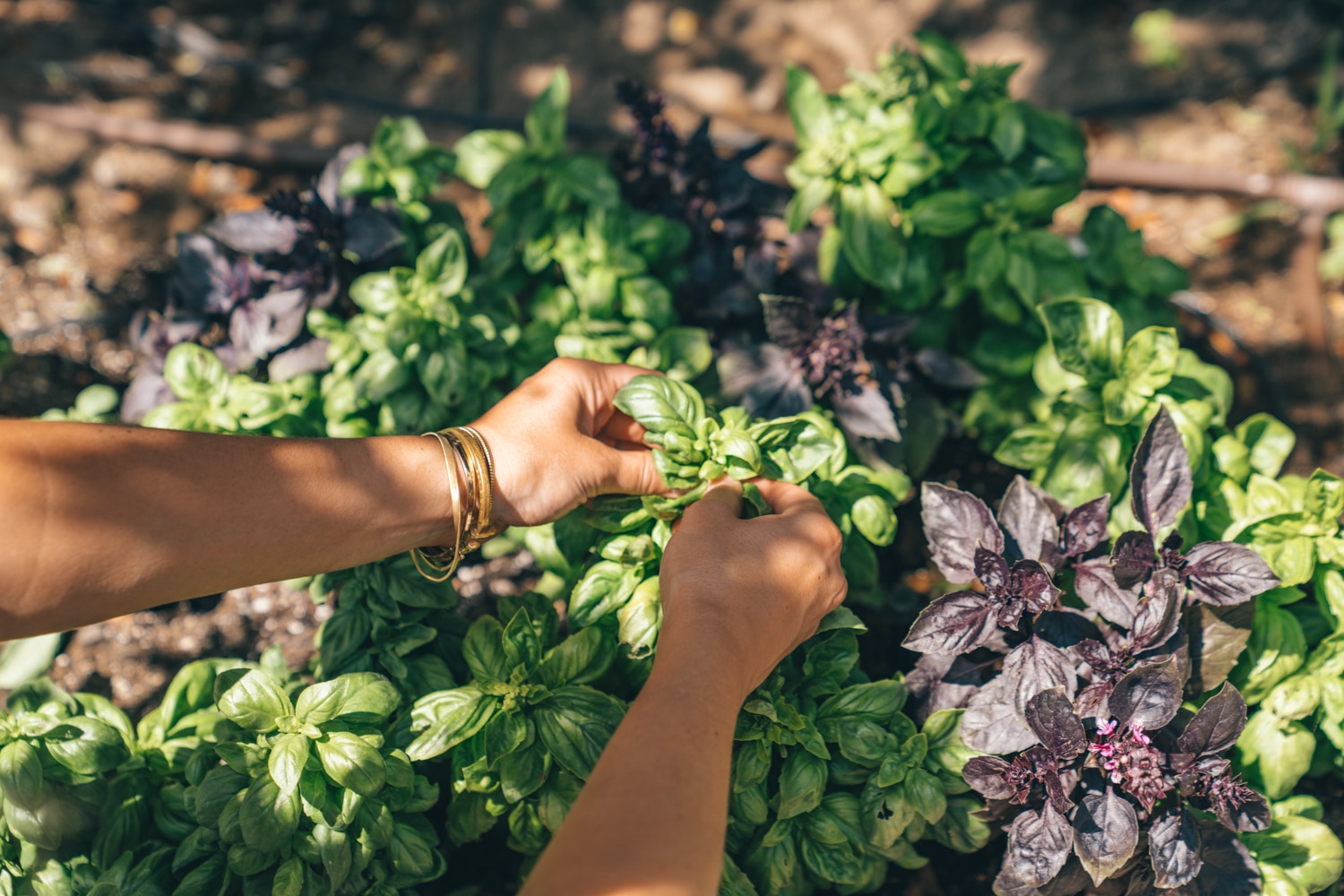
Pots or Herb Garden?
Some people find that it’s easier to stay on track if they begin with small pots and add a single plant in each. All they require is a little water and sunlight to begin since the soil already contains much of the nutrition that the herbs need to grow. After seeing a good amount of growth, these plants won’t continue to be happy in their small pots. They need room to grow their roots, and transplanting the herbs from pot to herb garden would be the next step. Some people think this alters the growth of a plant, so they like to start from the beginning with a garden. There are so many options here from raised garden beds to vertical stackable planters if you’re low on space. Gardener’s choice! To grow herbs in pots, it’s important to use potting soil over garden soil. Most herbs require 6-8 inches of soil depth.
Planter
pots
Planter
boxes
Soil Mixture
It’s important to know that you can’t just run out to the backyard, dig up a little dirt and call it done. Ordinary garden soil dries out quickly. What you’re looking for is soil that is loose and well-drained. I’d opt for purchasing some high-quality garden or potting soil (depending on your type of container) that comes with a good mix of minerals, micronutrients, beneficial bacteria, and decomposed organic matter.
Soil
Standouts
Fertilizer
Most quality potting soils already have fertilizers in them. Wait 4-6 weeks after potting to begin lightly fertilizing because this will give the herbs time to deplete their nutrients. Herbs in containers will require more fertilizer than those growing in the garden because nutrients are flushed out of the pot every time you water. Once you have herbs planted and growing, it’s important to keep them growing with a light, all-purpose organic fertilizer. Read the label to determine how much and how often to use for pots vs. garden beds.
Fav
fertilizer
Watering
Water your herbs in the early morning if possible as the water will soak further into the soil. Always water the soil around the herb and never water over the leaves. This promotes mildew and disease. If you’re very unsure of how much or little you’re watering the herbs, one of my favorite tools is the moisture monitor.
Basil
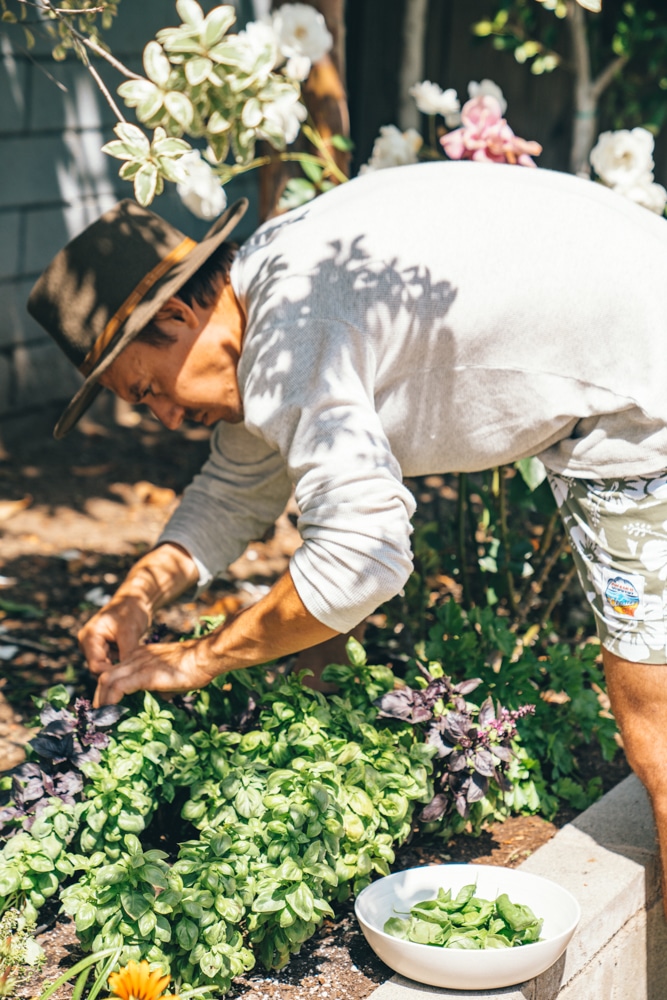
If I could pick just one herb to grow, it’d be basil hands down. The aroma…the flavor…and don’t even get me started on pesto. M -M -M! The first time I met my fiancé, he was making homemade pesto. I’ll never forget it, and now it’s my absolute favorite thing he makes to accompany SO many yummy dishes. To grow, simply either buy a basil plant at your local garden shop or get the seeds. Generally speaking, plants love a garden where they have room to spread their roots, but a large planter works as well.
Sun: Full (6-8 hours/day)
Water: Frequent; for example we water our basil 1x in the morning daily
Food: Pesto, pesto pasta, tomato basil soup, caprese salad, pizza, cocktails
Rosemary
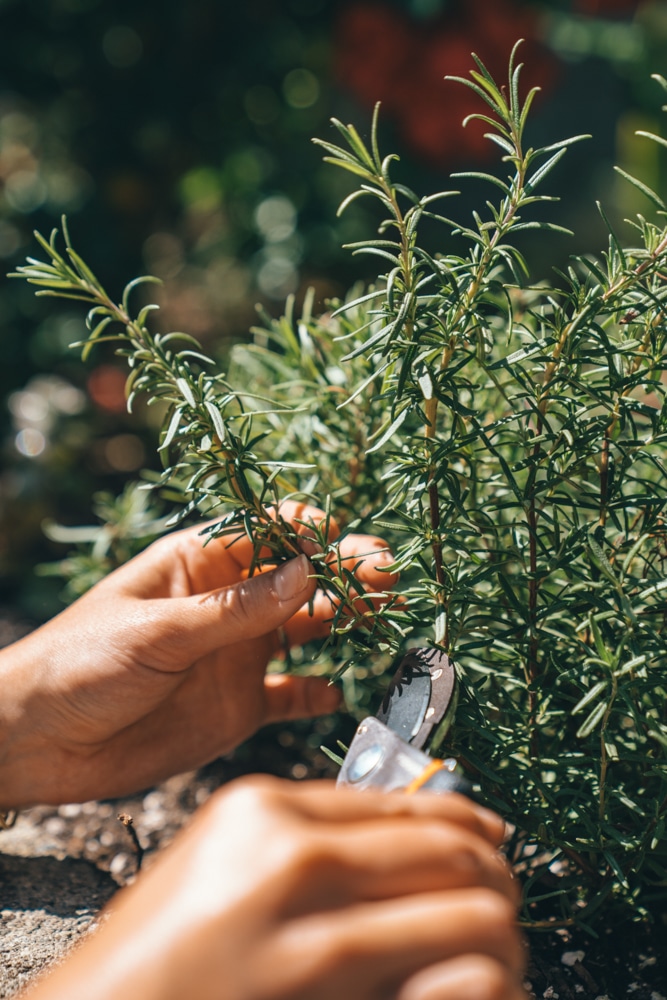
My favorite thing is going out to the garden for a few snippets of rosemary sprigs to accompany a dinner recipe. The aroma just about beats any perfume if you ask me…let me smell like a garden any day. In warm areas with fair humidity, rosemary can grow around 4 feet high. In terms of medicinal aid, rosemary tea is said to enhance one’s memory.
Sun: Full
Water: Frequent but don’t over do it
Food: Oven-roasted potatoes, any and all roasted veggies, stews, roasted chicken, salmon, bread, lamb, pork loin, gin cocktails…
Thyme
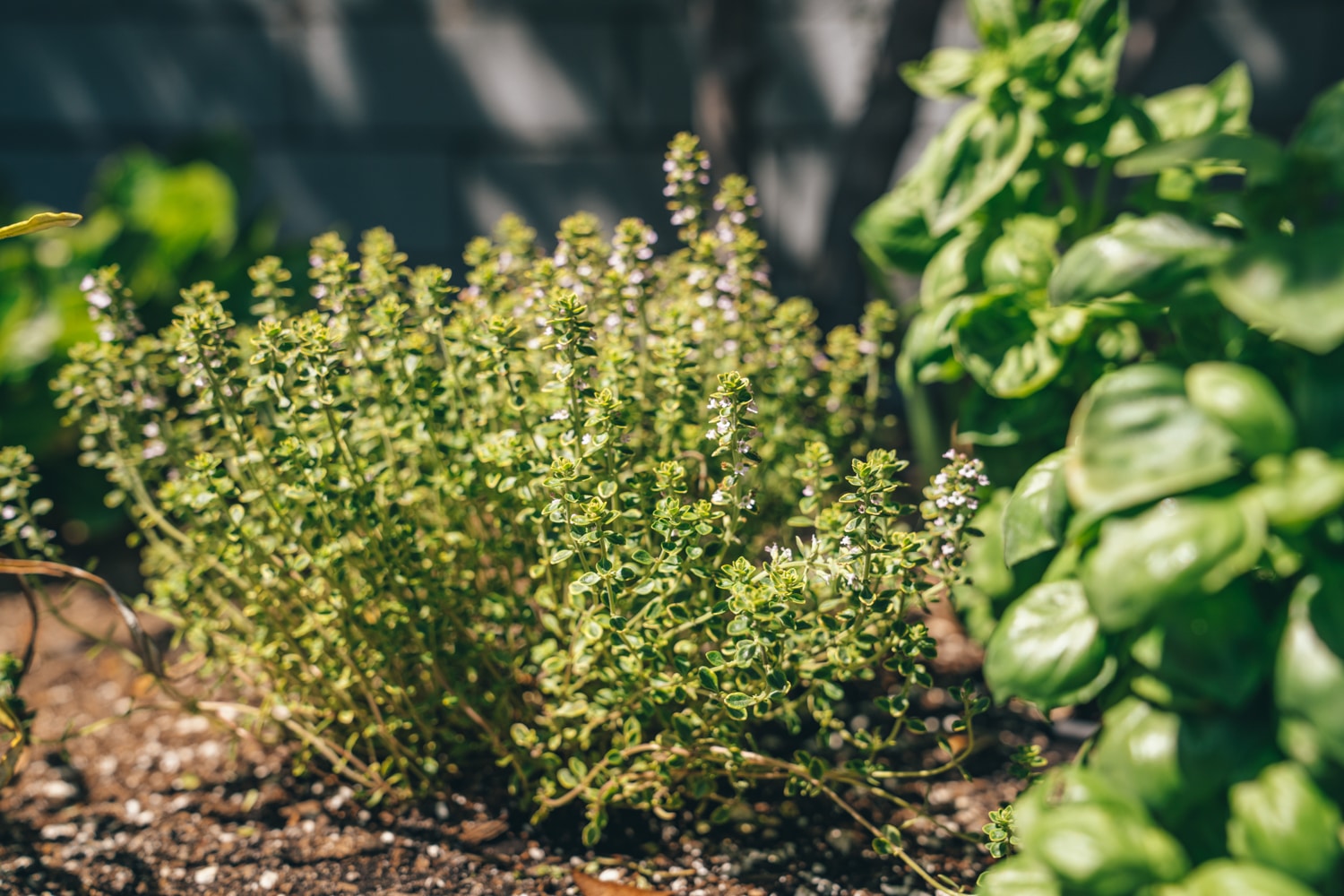
We planted lemon thyme, and it resembles an evergreen shrub and does great in any condition – poor soil, drought conditions, you name it. It pairs with just about anything from desserts to poultry.
Sun: Full
Water: Frequent but don’t over do it. Prone to root rot.
Food: Lemon thyme dessert bars, short bread cookies, roasted chicken, rice, fish
Italian Flat Parsley
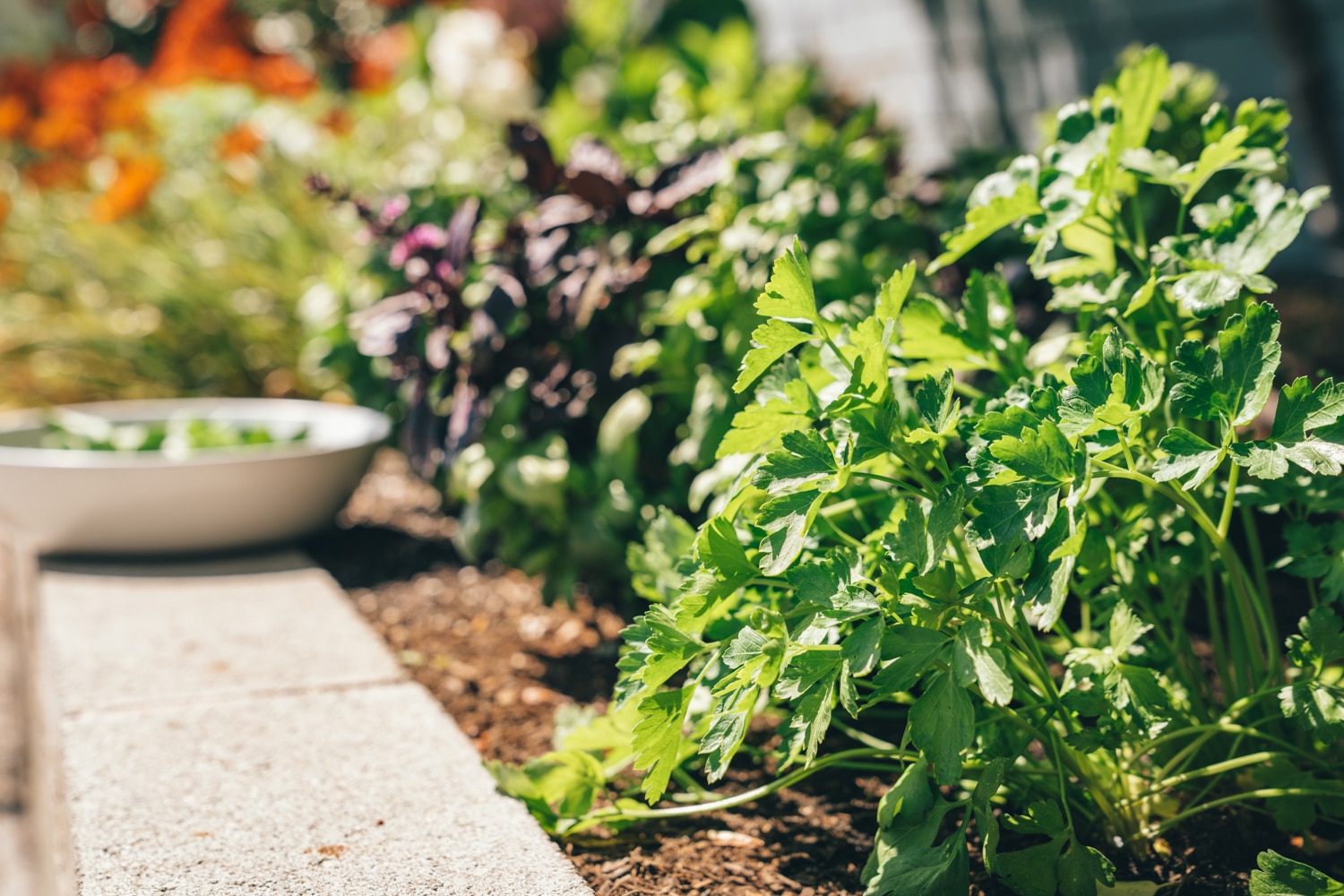
Parsley comes in two forms – curly (often used as a garnish) or flat (used to flavor food due to its more robust taste). It’s a popular herb, especially in Italia 🙂 There’s an expression in Italy, most often said to children: “Sei come il prezzemolo, sei dappertutto,” which means “You’re like parsley, you’re everywhere.”
Sun: Full to Partial
Water: Frequently after planting, then more sparingly as it’s established
Food: Marinades, dressings, chimichurri (!!!), potato salad
Mint
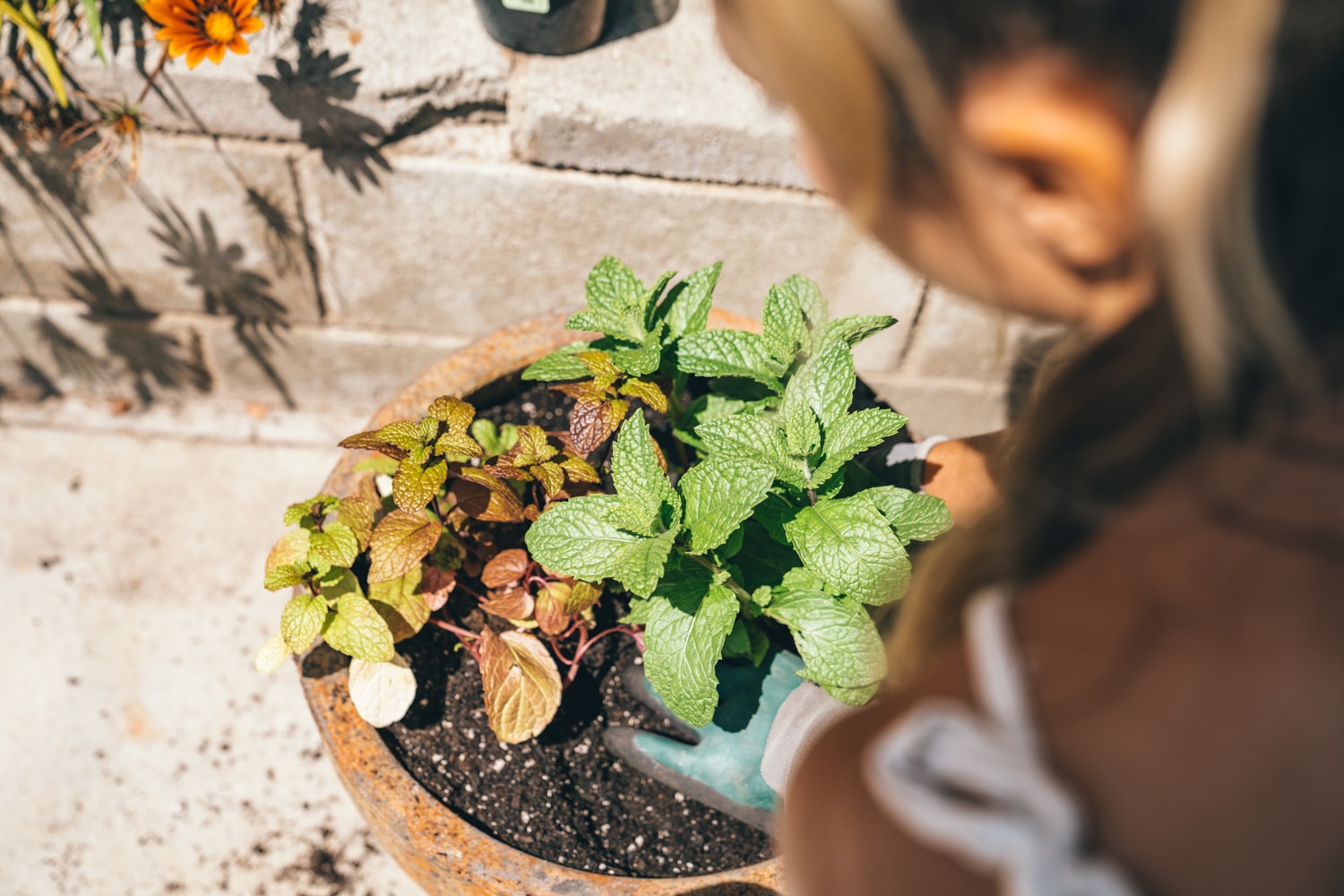
Is there a fresher scent than mint? That rhymes. Used in many dishes and beverages, mint is easy to grow and will undoubtedly grow fast if left unchecked which is why I chose to plant my mint in a pot. If you plant in a bed, make sure to have some physical barriers and don’t be afraid to pull some out.
Sun: Partial to Full
Water: Frequent
Food: Watermelon-cucumber salad, summer orzo, chicken gyros, teas, lemonades, mojitos, mint julep
Dill
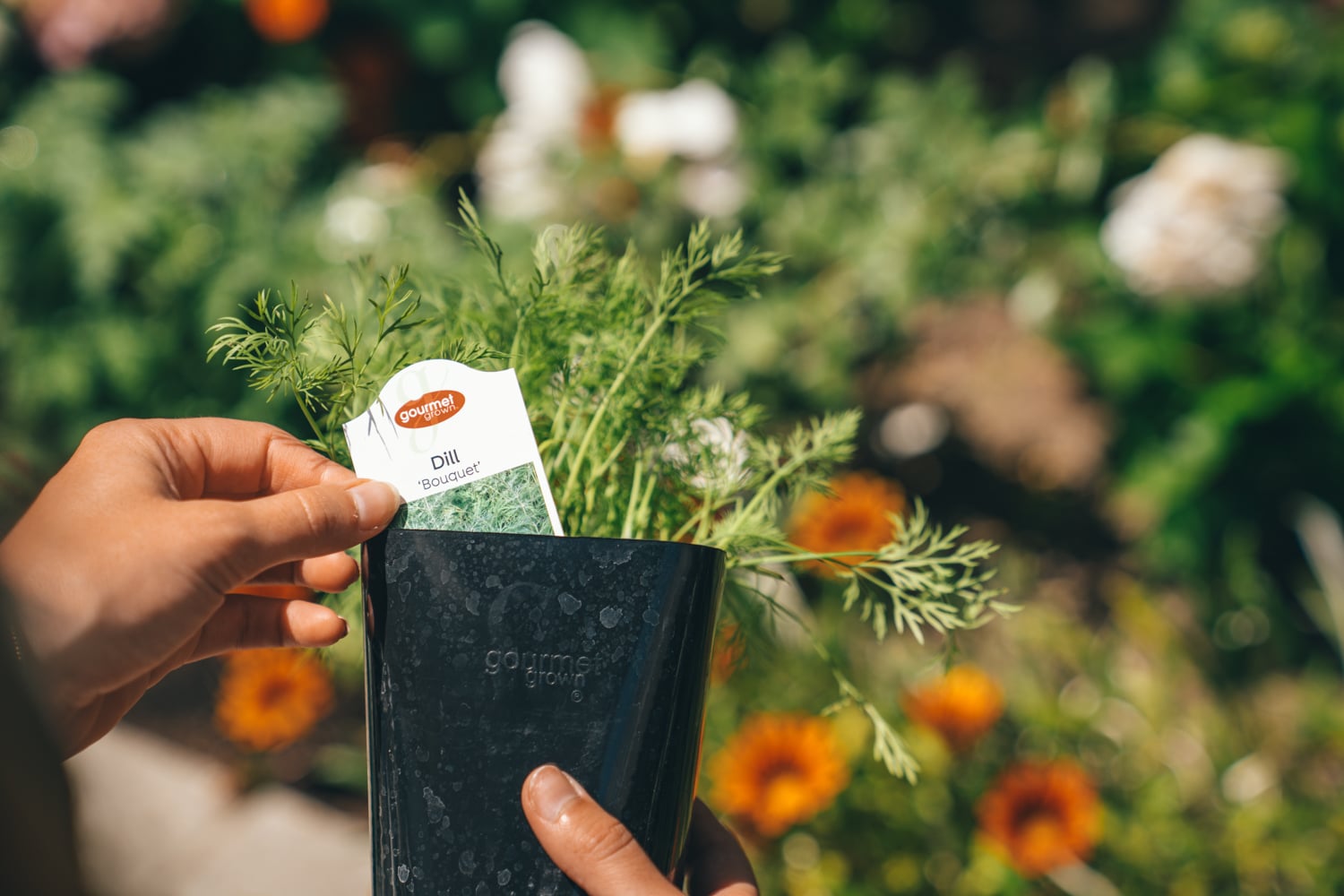
Dill is so easy to grow from seeds (we actually did both), and beware that there’s a reason it’s often referred to as “dill weed.” It can catch like wildfire and BOOM. You got more dill than you ever bargained for. This is why many people like to contain dill in a pot.
Sun: Full
Water: Frequent
Food: Homemade ranch dressing, tuna salad, potato salad, salmon, yogurt, make your own pickles
Oregano
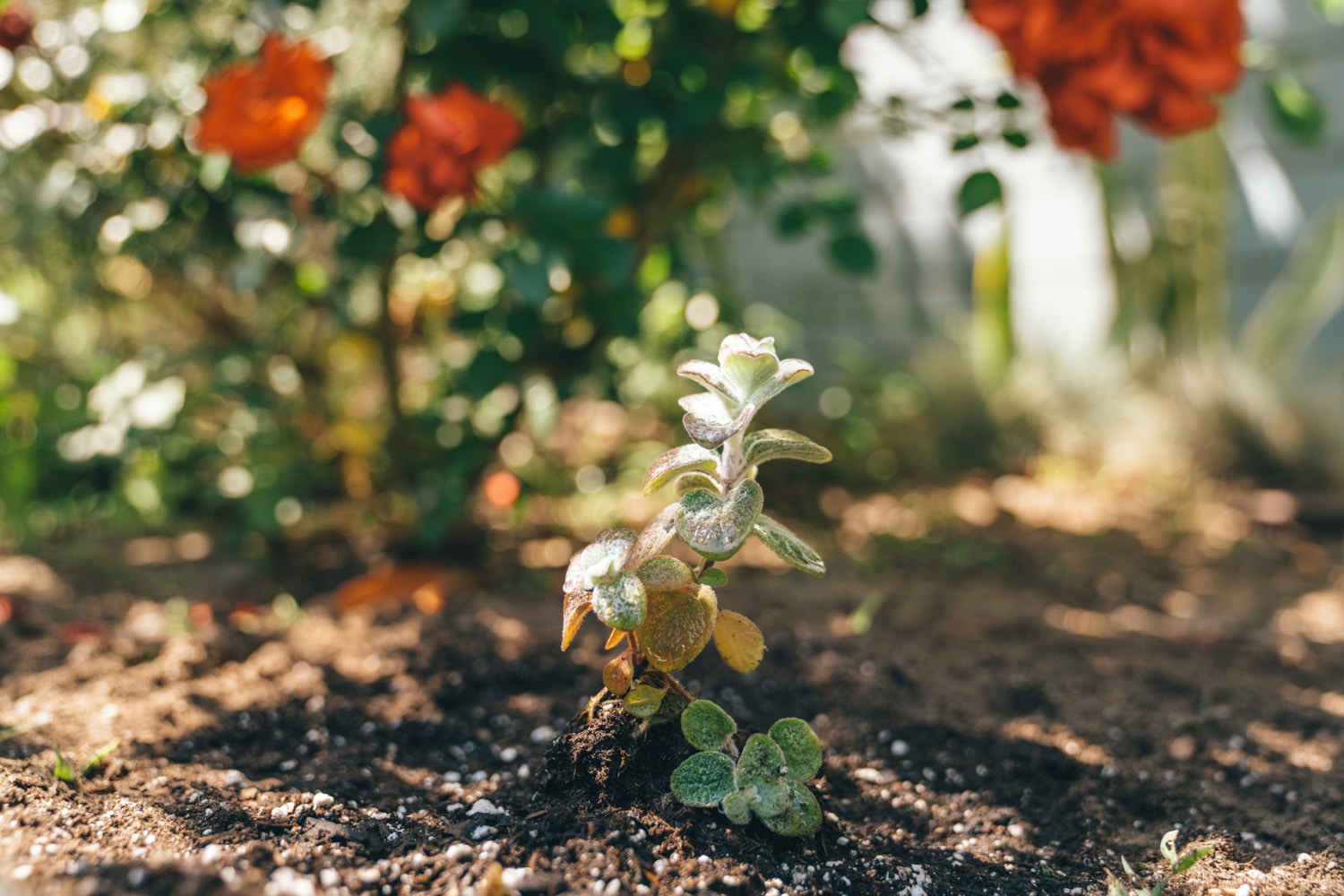
Hailing from the mint family, oregano is used in lots of mediterranean dishes. The Greeks and Romans associated oregano with joy and happiness. The name comes from the Greek words “oros,” meaning mountain, and “ganos,” meaning joy. Also synonymous with: PIZZA. It can be utilized fresh or dried but use in moderation because it’s an intense herb in food.
Sun: Full
Water: Frequently after planting, then sparingly allowing soil to almost go dry
Food: Pizza, pasta, grilled meat
Cilantro
You’ll often see the seeds referred to as coriander, but the cilantro plant itself is easy to grow. I find it to be an extremely strong herb in food, so a little goes a long way in my book.
Sun: Full
Water: Frequent
Food: Avocado, chicken, fish, ice cream, lamb, lentils, mayonnaise, peppers, pork, rice, salads, salsas, shellfish, tomatoes, yogurt
More
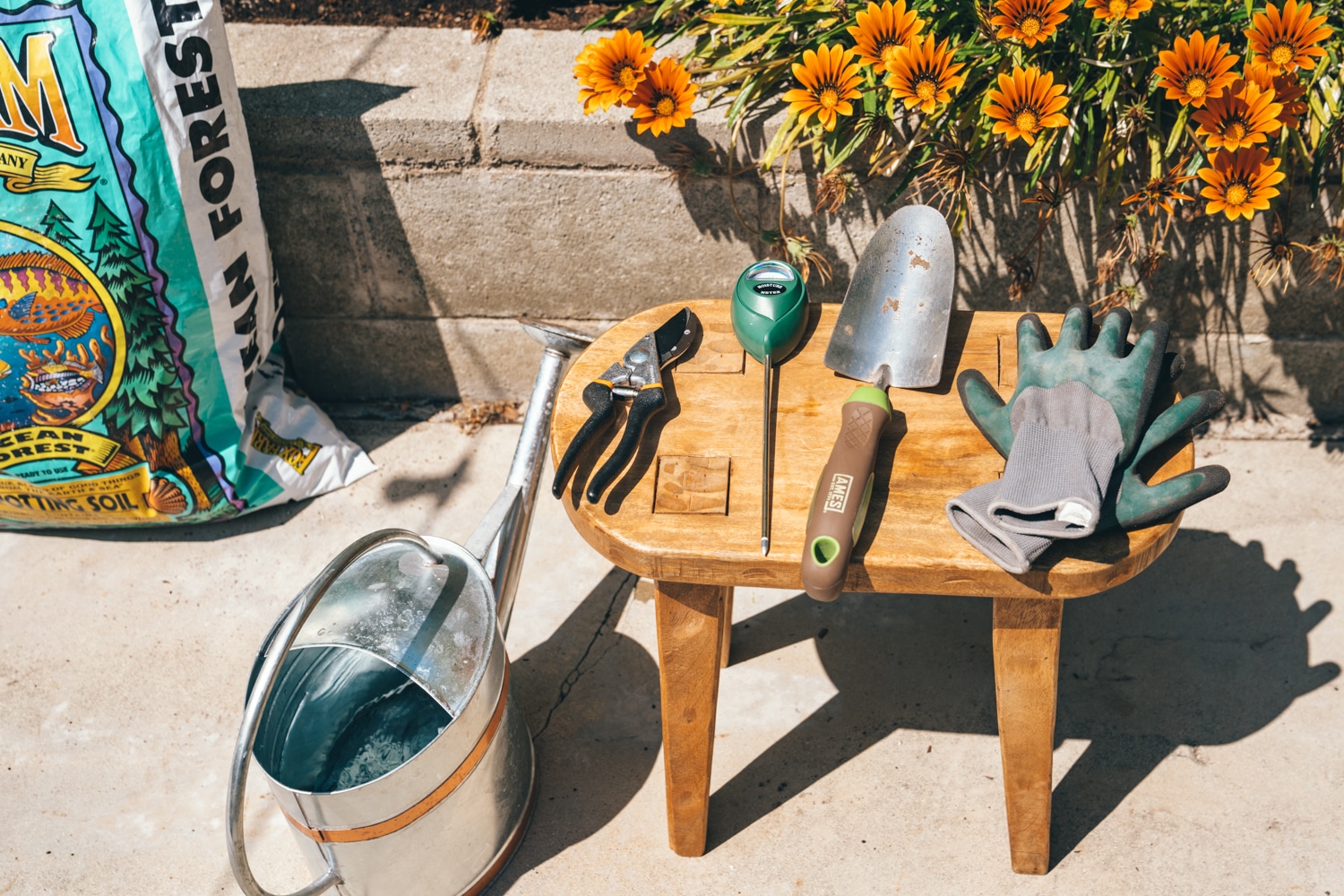
A few tools help the gardening process including gloves, shovels, herb scissors, the right soil, fertilizer and of course pots and/or beds.




Web address where we may receive these plants via mail order?